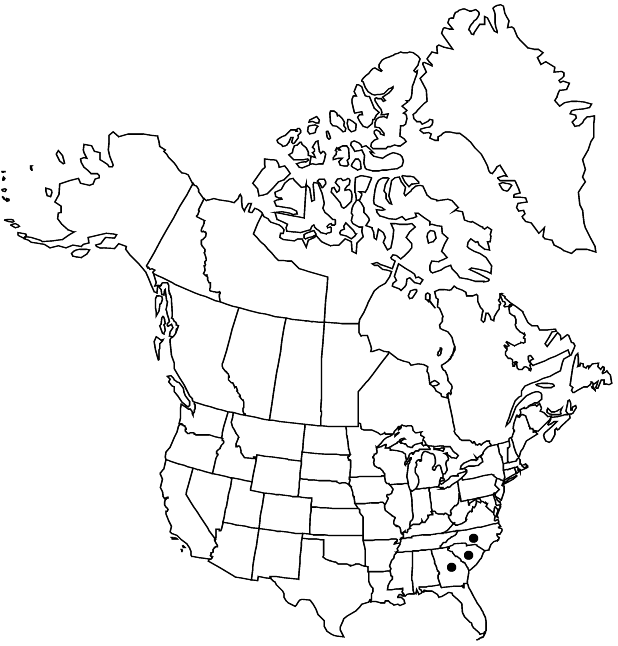Lysimachia loomisii
in H. B. Croom, Catal. Pl. New Bern 1837, 46. 1837 (as Lisymachia) ,.
Stems erect, much-branched, 3–7 dm, glabrous or sparsely stipitate-glandular, especially distally; rhizomes slender; bulblets absent. Leaves usually opposite (to subopposite or whorled); petiole absent; blade linear to narrowly elliptic, 2–6 × 0.1–0.8 cm, base truncate or cuneate, slightly decurrent, margins entire, revolute, eciliolate, apex acute to obtuse, surfaces punctate, glabrous; venation single-veined. Inflorescences terminal, racemes, 3–10 cm. Pedicels 0.7–1.1 cm, glabrous to sparsely stipitate-glandular. Flowers: sepals 5, calyx streaked with black resin canals, 3–6 mm, slightly stipitate-glandular at least marginally, lobes lanceolate, margins thin; petals 5, corolla yellow with reddish base, streaked with black or reddish-black resin canals, rotate, 4–7 mm, lobes with margins entire, apex rounded, stipitate-glandular adaxially; filaments connate 0.4–1 mm, shorter than corolla; staminodes absent. Capsules 3–3.5 mm, not punctate, glabrous. 2n = 42.
Phenology: Flowering early summer.
Habitat: Pine savannas, moist roadsides
Elevation: 0-200 m
Distribution

Ga., N.C., S.C.
Discussion
A rare hybrid (known only from one population in Washington County, North Carolina) of Lysimachia loomisii with L. quadrifolia has been called L. ×radfordii H. E. Ahles.
Selected References
None.
Lower Taxa
"dm" is not declared as a valid unit of measurement for this property.